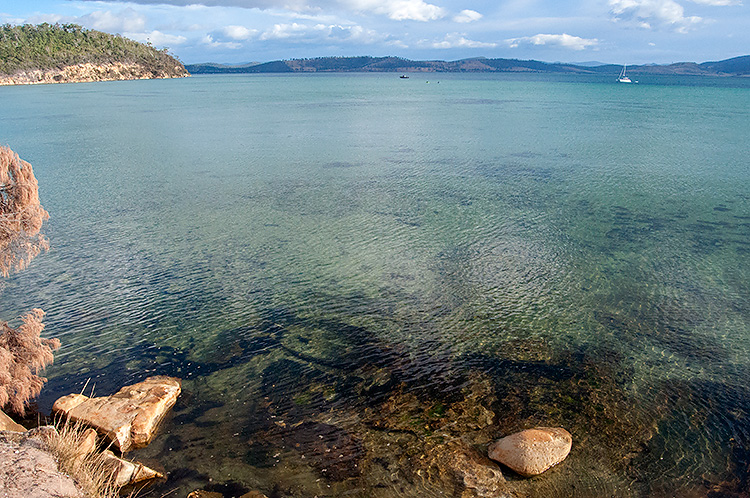“Having had full evidence of the deeds of darkness perpetrated in the mines, I contemplated the naked figures, faintly perceptible in the gloom, with feelings of horror” ~ Reverend Henry Phibbs Fry, 1847.
Once upon a time, coal was shipped to Tasmania from the Australian mainland at great expense. So when in 1833 surveyors discovered an outcrop of coal in the state’s south east at Plunkett Point, the government seized the opportunity. Lieutenant-Governor Arthur then sent for some of the country’s worst convicts to do its bidding, thinking it was also a fitting place for punishment.

Men were lowered by rope into 300 foot shafts, sitting face to face on an iron bar. Here they toiled long hours in the dreary abyss wearing nothing more than shorts.

Heading into the site, I wandered along the Tasman Peninsula on a cloudy summer’s day, past an old oiler that looked something like a kamikaze zeppelin sausage, then a deep pit and into the brick strewn rubble of the main settlement. I crossed paths with a friendly American lady walking her dog while my friend and professional photographer Dee Kramer fired up his drone. We had the place all to ourselves.
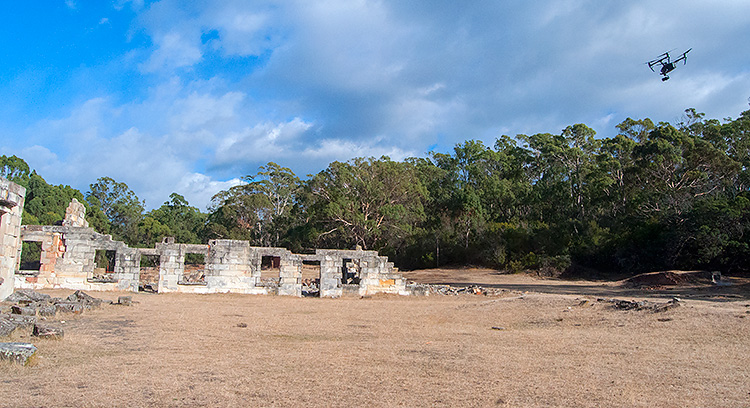
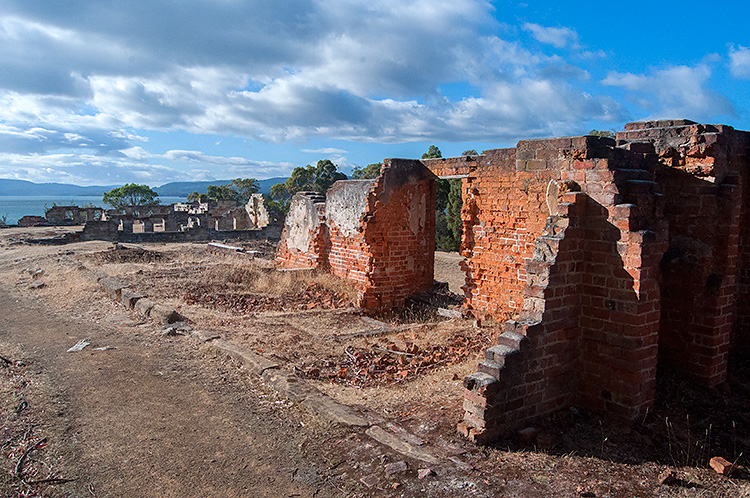
Tasmania’s first operational mine, the Coal Mines Historic Site delivered its first coal shipment on June 5th, 1834. It overlooks the pretty Norfolk Bay, and I found it difficult to imagine it was once a place of nefarious toil. At its peak, the site housed over 600 convicts, 27 military personnel, women and children. There once lay a bakehouse, washhouse, cookhouse, chapel and a schoolroom amidst this rubble of frayed memories.
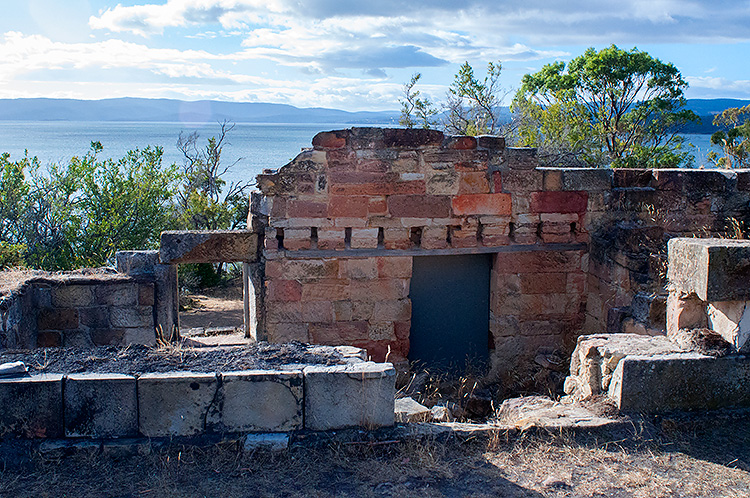

Dee was getting good footage above the ruins and out across the bay, while I explored pockets around the old stone barracks. Just months ago, Dee was telling me, the grass around the site was vibrant green. Today it was parched and sallow as shadows cast through unavailing brick windows.


I explored the four solitary punishment cells, constructed beneath the ground in 1843 to house repeat offenders. This part lay well intact. In fact, they appeared so well built and preserved I could only imagine it functioning as an historic backpackers and not as it once did.
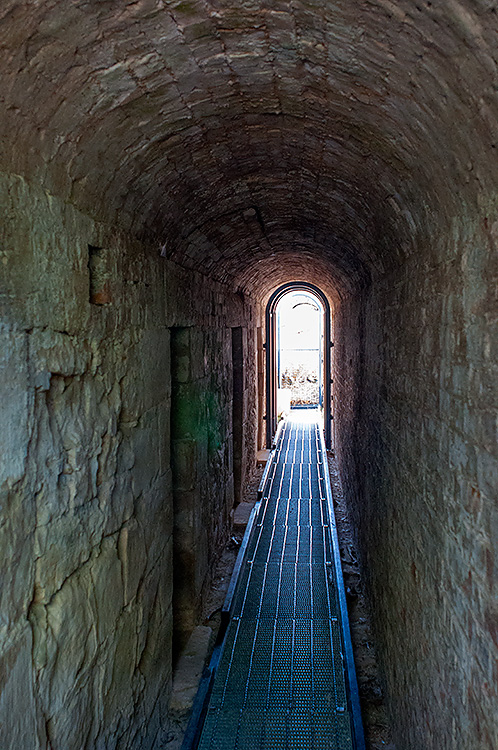
In the 1840s the mine hit its peak before it began to decline after bad management. Homosexuality was rife in the caliginous passages – where men couldn’t be watched – and coal production fell sharply. In 1848, the government closed the mine on ‘moral and financial grounds’. The mines were then leased to private operators who used them until the 1870s.

Due to its significance in Australian history, the Coal Mines Historic Site is listed as part of the Australian Convict Sites World Heritage property, along with Port Arthur.

Is the Coal Mines Historic Site worth visiting?
Yes. Although the site isn’t among the most spectacular of its kind I’ve visited, its location by Norfolk Bay and proximity to Lime Bay State Reserve makes it an interesting diversion. There are also sections to explore at the site should the urge take you: The Air Shaft – 2.5km return, Plunkett Point – 1km return, the Quarry – 2.5km return, Signal Station – 800 metres return, the Military Precinct – 1.5km return and the Convict Precinct – 2.5km return.
